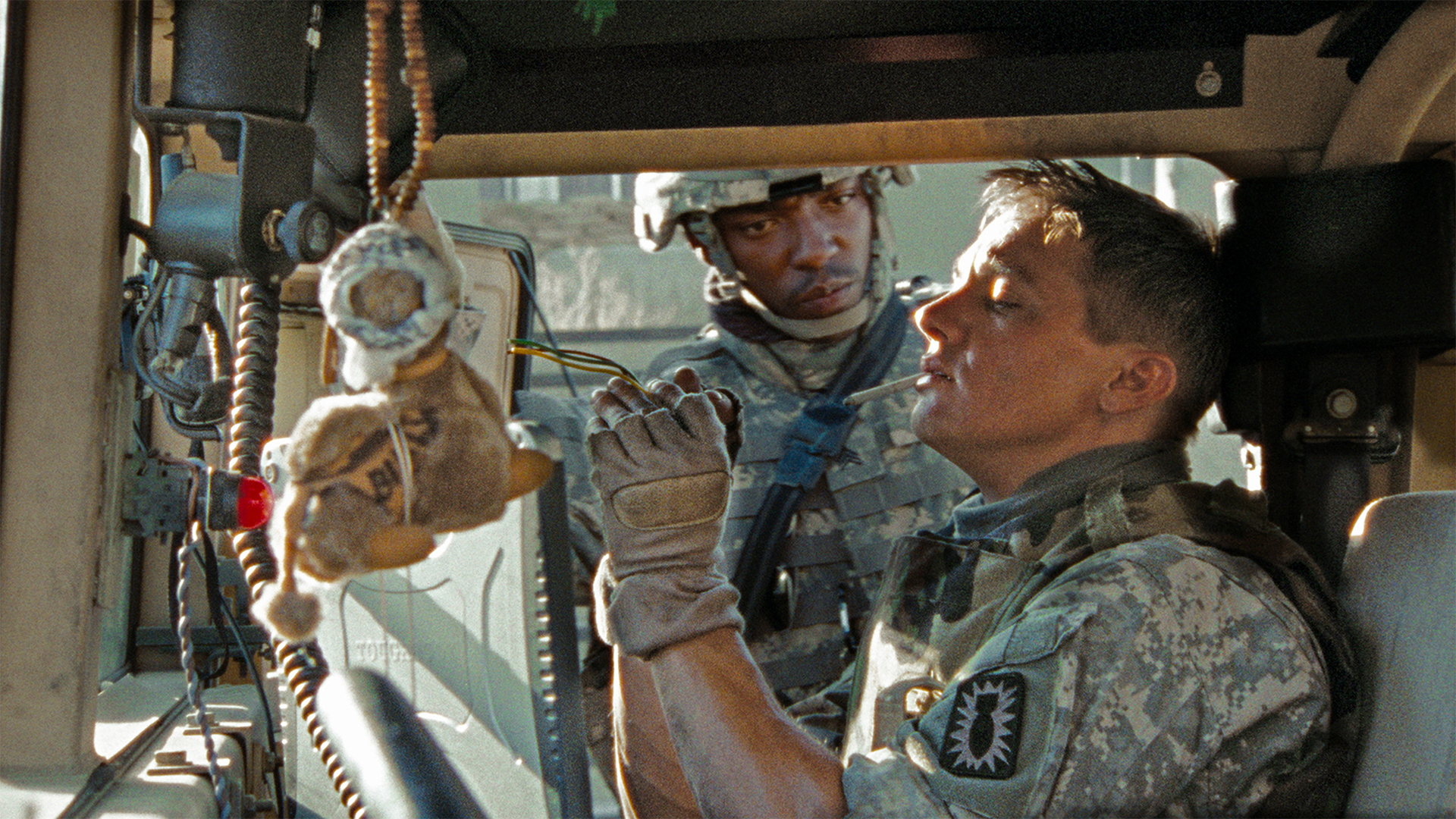Throughout her directing career, Kathryn Bigelow has excelled at communicating imminent danger. In her 1981 feature debut, The Loveless, she examines moral decay in small town America with provocative visuals that stress the underlying tension between an outlaw biker gang and resentful locals. Bigelow’s most recent film, 2017’s Detroit, focuses on American institutional corruption, which became controversial for sparking discussions about cinematic authorship and race. Both The Loveless and Detroit share a confrontational aesthetic, and both films share similar themes with Bigelow’s 2008 classic, The Hurt Locker, as she deconstructs character values and the long-term effects of split-second decision-making. Bigelow’s fearless protagonist complements her fearless directorial style, and she forever changed the game by winning the Academy Award for Best Director – the first woman to receive the honor.
In The Hurt Locker’s opening sequence, Bigelow first hooks the audience with the atmosphere she creates. During the Iraq War, an Explosive Ordnance Disposal team goes to work, and the Baghdad setting is inherently jolting. To accentuate this, Bigelow uses rapid-fire edits and high-low camera angles for various perspectives. On the street, a robot approaches a bomb. Up above, locals watch the operation transpire. Despite all the chaos, the soldiers remain focused on logic and routine. However, a small observation leads to tragedy, ending with an image that viewers won’t soon forget: the blood-stained helmet of Staff Sergeant Matthew Thompson (Guy Pearce). Bigelow strips the characters (and the audience) of their confidence, while establishing a sense of atmosphere with Super 16 millimeter cameras.
Enter Sergeant William James (Jeremy Renner), the new team leader at Camp Victory. Like Bigelow herself, he’s fearless with his work; an individual that radiates with supreme confidence. He’s calm and ready to seize the day, unafraid that it might be his last. Unsurprisingly, Sergeant J.T. Sanborn (Anthony Mackie) doesn’t appreciate James’ “wild man” mentality. Whereas Sanborn values military logic and routine, James customizes his work for maximum efficiency based on personal experience. If he’s going to die, it will be comfortably, evidenced by his decision to remove all gear while processing a trunk full of bombs. Bigelow’s metaphors are clear and align with her own filmmaking ideologies. Sanborn carries psychological baggage, and James lives in the moment, concerned only about the objective. Scene-to-scene, the soldiers’ personal conflict parallels the unpredictable nature of their work, and Bigelow plants seeds of doubt while raising questions about wartime bravado, most notably through James’ genuine passion for his job.
Through character dynamics, Bigelow and screenwriter Mark Boal exemplify the interpersonal conflict and camaraderie that comes from intense military experiences. In war films, directors often dismiss the most frightened soldiers as weak, while highlighting the righteous and mentally strong. Bigelow, however, seeks transparency through The Hurt Locker’s chaos, confusion, and conflict. As a result, a basic concept emerges: acceptance.
Bigelow creates further suspense through physical space and intimate framing. Externally, the IEDs are the main concern, yet the street scenes reveal the numerous variables that must be neutralized for survival. During interior sequences, Bigelow highlights the psychological variables—memories and insecurities that lead to verbal and physical conflict. Existential philosophizing is not uncommon in the genre, and such moments are undoubtedly crucial for highlighting the larger picture. Still, a lack of directorial polish can make pivotal scenes feel melodramatic and forced. In The Hurt Locker, Bigelow uses restraint. As a result, these moments of small emotional tension pop. Bigelow masterfully combines existential war drama with the elements of a classic thriller.
The Hurt Locker’s textured performances bring the narrative to life. When production began, Renner and Mackie were relatively unknown actors, and the casting itself represents a bold directorial move. As James, Renner exudes a cool confidence that’s balanced with a parental demeanor. Like a father, James can be annoying and difficult to interpret, but fellow soldiers realize he’s all business. After dismantling nearly 900 bombs, James’ priorities have shifted. His nostalgia correlates with a collection of bomb components instead of any childhood memory or domestic dream. As Sanborn (a former intelligence officer), Mackie portrays a fearless man that hasn’t yet stripped away psychological distractions like James. He merely views the bomb parts as “shit from radio shack,” but he’s concerned about not having his own legacy: a son. In stark contrast to Sanborn’s roaming mind, James’ thoughts, beyond his family, are focused on one thing: the bomb. For James his job has consumed him. It’s a theme reflected in the opening text notes, “war is a drug,” and by Bigelow’s own passion for filmmaking.
Fearless directors shape cinema trends by ignoring them completely. And while many Hollywood directors merely wear “fearless” on their sleeve, Bigelow creates her own path, always refusing to stay in a designated lane, always challenging audiences with her directorial voice, and always taking risks.
Read the article and now you want to watch the movie? Check it out right here on Fandor!
Q.V. Hough (@qvhough) is a freelance writer and Vague Visages’ founding editor. From 2014 to 2017, he wrote over six-hundred video scripts for WatchMojo, and he’s the author of their first e-book, WatchMojo’s 100 Decade-Defining Movie Moments of the 1990s. From 2006 to 2012, Q.V. lived in Hollywood, California and worked closely with ABC On-Air Promotions as the production manager for LUSSIER. He now resides in sunny Fargo, North Dakota.





